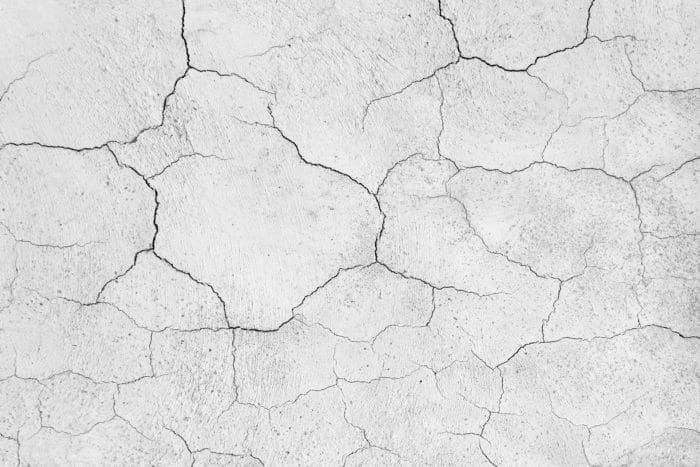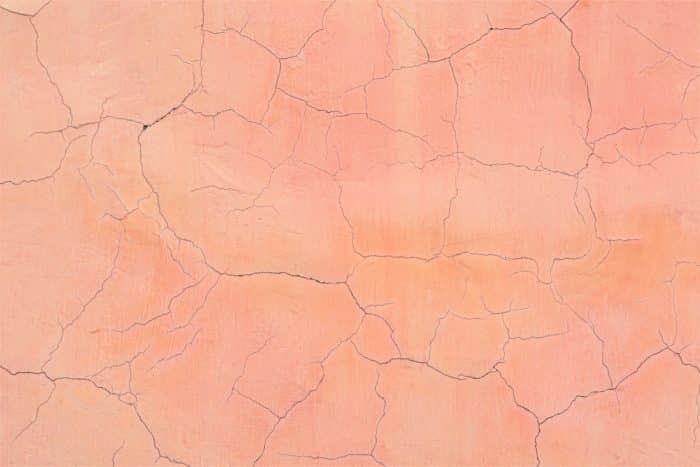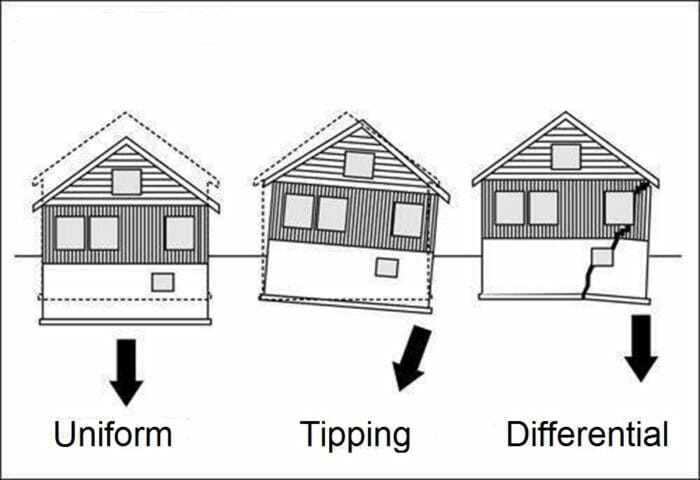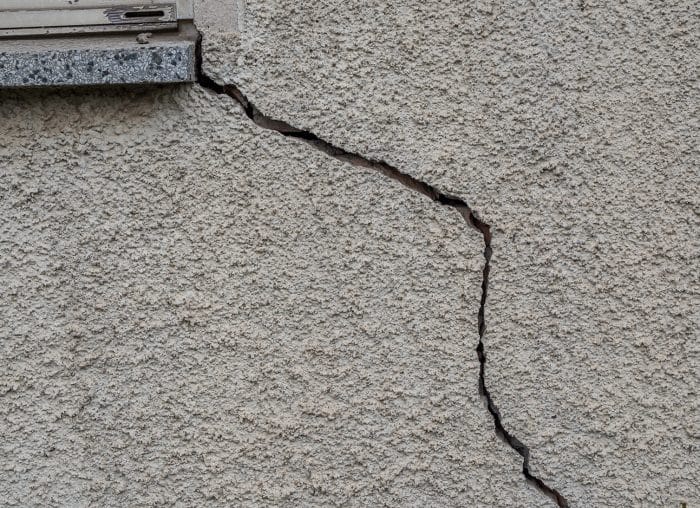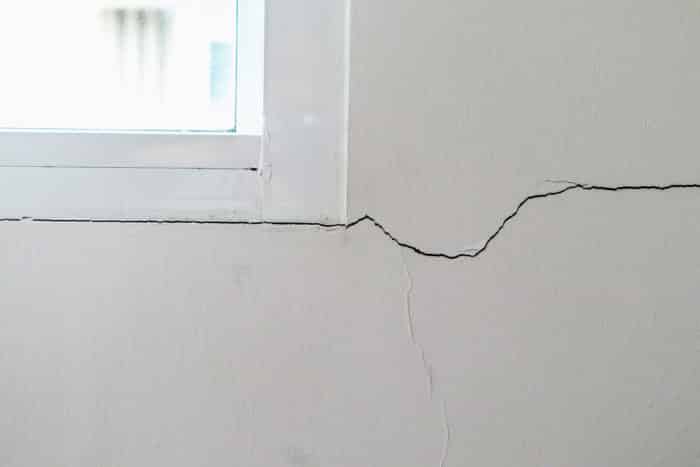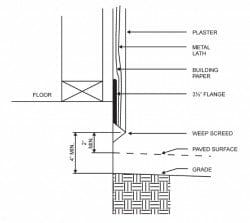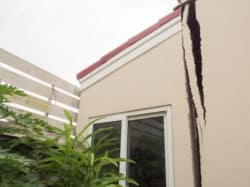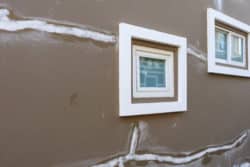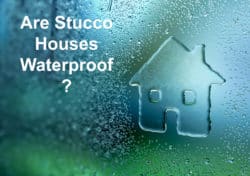Stucco Cracks: Diagonal, Horizontal, Vertical | Serious?
Fortunately, not all stucco cracks are serious, and need not be worried about, however, some diagonal, horizontal and vertical cracks are serious.
Homeowners should know the causes of cracks and recognize which types are a warning sign of structural issues or that water may be leaking through; causing dry rot, mold, or structural damage. Moisture in or behind a stucco wall is a serious matter.
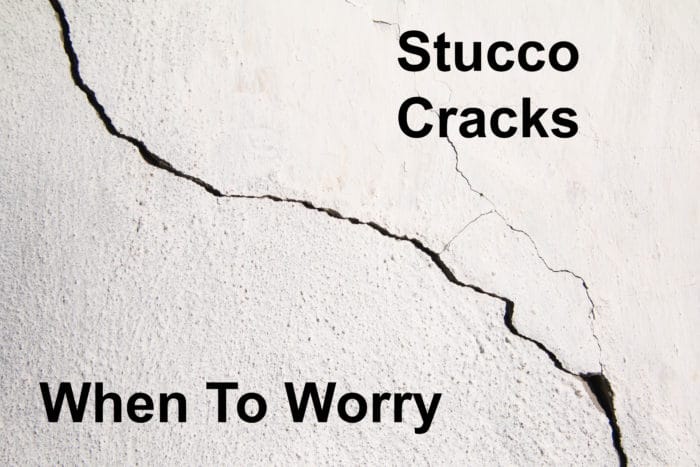
One of the best ways homeowners can avoid costly repairs is through understanding the causes of cracks and knowing the seriousness, then doing preventative maintenance and repairs, if necessary, before they become a major issue.
Does your home have any of the following stucco cracks?
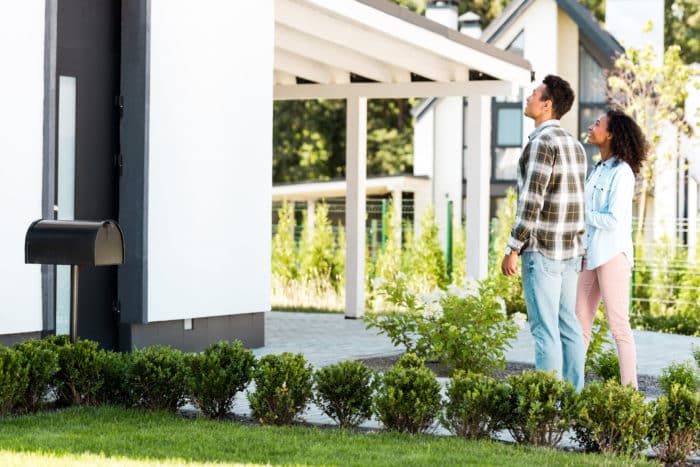
- Web or spider looking cracks
- Hairline cracks
- Door or window corner cracks
- Active cracks
- Structural cracks
- Temperature or climate caused cracks
- Cracks in a pattern
- Horizontal, diagonal or vertical cracks
Check and if so, you should know:
- What type of stucco do you have?
- Traditional “Hard Coat” stucco
- EFIS synthetic stucco system / assembly
- “One Coat” stucco wall system
- The age of the home, for it will provide insight on why.
- Are there moisture problems and is the stucco is leaking?
- Are the cracks serious, normal or cosmetic?
- How to repair and maintain your stucco.
The causes of cracks and moisture issues will differ, depending on if you have Traditional “Hard Coat” stucco or EFIS synthetic stucco walls
The cause of cracks and other problems may vary depending on the type of stucco you have. Are the cracks in:
- Traditional Hard Coat stucco
- EFIS synthetic stucco system / assembly
- One Coat stucco system
Understanding the differences between the types of stucco and the problems associated with them often affects your decision on whether to repair, how to repair, or to replace all the stucco or just do nothing. This article will principally address Traditional “Hard Coat” stucco, the most commonly used type in the United States, however, there will be links to several of our other articles addressing cracks and other issues with EFIS synthetic stucco, and One Coat stucco systems which are also used in the U.S.
How Long Does Stucco Last ?

In the U.S. the life expectancy of stucco generally ranges between 40 to 80 years depending on the climate, quality of the original installation and maintenance. It may even last over 100 years and after that, the home can be re-stuccoed and serve many more years. Ancient societies have used stucco for thousands of years.
Technically a stucco wall is considered a type of cladding
When engineers and professional’s discuss stucco walls, they usually think of them as being more than a mixture of Portland cement, water, sand and lime or other materials, but they think of them in terms of a system, group of components or an assembly, not just the exterior cladding.
Typical types of claddings are brick claddings, vinyl claddings, wood claddings, or fiber cement claddings (i.e Hardiplank / Hardiboard) etc. At times, a home may have two or three types of cladding providing a unique architectural look.
Approximately 25% of New Homes Today Have Stucco Cladding

Builders use stucco as a cladding because it is one of the most popular and desirable claddings chosen by consumers. The market reflects this:
- 27% Traditional hard coat stucco, EIFS synthetic stucco or “One Coat” stucco system
- 25% Vinyl siding including vinyl covered aluminum
- 21% Fiber cement (i.e Hardiplank / Hardiboard)
- 20% Brick and stone (including brick and stone veneer)
- 5% Wood or wood product
The main reasons people choose stucco as a cladding:
- Durability
- Affordability
- Fire protection
- Low maintenance
- Flexibility in choice of textures, colors and accents
Building Codes And When a Home Was Built Is Important In Analyzing Stucco Cracks And Problems
Engineers and contractors have to take into account what the Building Code at the time a house was built when they are evaluating stucco cracks and problems because it helps them understand what may be the cause of the cracks or moisture intrusion issues that they are seeing.
One of the reasons that stucco cracks are getting more important, is that a number of code changes over the years has exasperated stucco issues relating to cracks, moisture intrusion, mold and mildew, as well as structural damage, because many of these problems go back to code changes. It’s like when you think you are solving one problem, you don’t realize your creating another. Another factor is when materials change or new ones are created by material manufactures, then other unseen problems often develop.
In the “OLD DAYS” homes did not have many of the problems that they have now. The air quality has gotten worse, often due to chemicals and additives in various materials used to build or furnish a home. When moisture problems occur or gets trapped in wall assemblies today, there is a higher tendency for mold to develop, wood rot to occur, and cracking or stucco damage to follow.
Homes are more complex today because we are dealing with:
- Engineered wall systems and assemblies.
- Complex moisture issues, water barriers, drainage planes and rain screens.
- Changes in energy requirements, building materials, building codes and fast track construction practices have greatly affected stucco walls systems and assemblies.
3 Types of stucco or wall systems
- Traditional “Hard Coat” Stucco Walls
- “EFIS” Synthetic Stucco Walls
- “One Coat” Stucco Walls
It is hard for most homeowners to know which type they have by just stepping back and looking at the wall. Yet it is important to know for it will affect the causes of problems and how to correct the problems or repair the wall.
#1 Traditional “Hard Coat” Stucco Walls
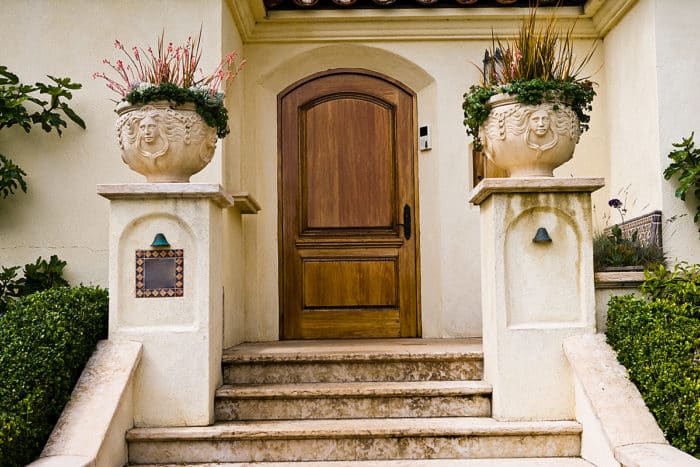
Often called a “Hard” or “Hard Coat” stucco. Traditional hard coat stucco will have three layers of stucco.
These three layers of stucco are:
- Scratch Coat
- Brown Coat
- Finish Coat
The Scratch coat is the first layer of stucco and is normally applied over lath, usually metal lath on wood framed or metal framed houses. This coat will have a rough surface which usually looks like rough scratched horizontal lines which helps provide a mechanical bond for the next coat going over it. It will usually be allowed to cure for 3 to 5 days before the Brown coat is applied.
The Brown coat is similar to the scratch coat but with a little different mixture of materials and it will have a granular sandy type of gritty texture and be smoother and flatter then the scratch coat. The standard curing time this coat is around 30 days.
The Finish coat is thinner than the scratch and brown coat and is the last coat applied. It provides a decorative finish that allows for different colors and decorative finishes to be used.
Strength. Having both a scratch coat and a brown coat helps make the stucco stronger and it lessens the amount of cracking that may occur.
What materials is Traditional stucco made of?
Traditional stucco is lime, sand and water mixed, but today it is made up of Portland cement, sand and water. Adding lime helps make it more workable and improves the permeability (less moisture penetrates the stucco). Contractors will also add various additives to increase strength, reduce cracking or aid in the curing process.
Traditional Hard Coat Stucco walls
These walls will generally have the following layers / assembly based on when the wall was built, the region of the country and the code at the time.
- A moisture barrier (typically, asphalt felt building paper / two layers)
- Metal lath – generally used
- Scratch coat – generally 3/8 inch thick
- Brown coat – generally 3/8 inch thick
- Finish coat – generally 1/8 inch thick
A total of 7/8 of an inch thick
#2 EFIS – Synthetic Stucco Wall System
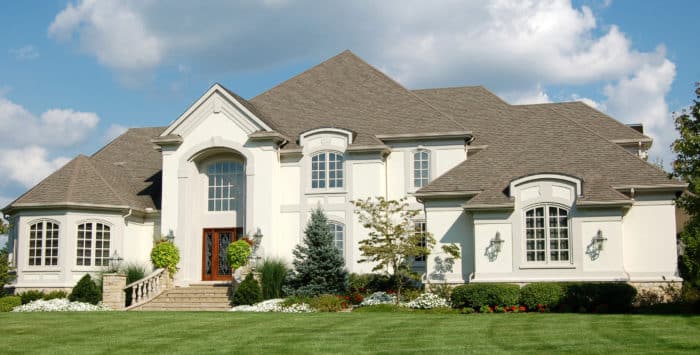
EFIS is an acronym for “Exterior Insulation and Finish System”
EFIS synthetic stucco walls look like Traditional hard coat stucco walls. It is difficult to tell the difference by just looking at the wall but there are significant differences in materials and design.
EFIS walls or wall assemblies are more complex and typically require a higher level of tradesmen to install, due to the complexities of the assembly when compared to a Traditional Hard Coat stucco wall.
Historically, there was a period in time when there was a lot of litigation involving EFIS, as well as insurance issues, however, it appears that most issues have been basically resolved; mostly due to significant design and code changes.
If you have a home built before 2,000, then there is reason for a higher level of concern over cracks and moisture issues with EFIS. After 2,000 there was a requirement requiring a secondary moisture barrier on all sidings used over wood framed construction. Then in 2009 there were additional code changes, basically requiring a drainage plane on most wood framed residential homes. This requirement helped give moisture an escape route if trapped.
An Exterior Insulation and Finish System – (EFIS) consists of:
- Possibly a moisture barrier or plane, depending on the year of construction
- A layer of foam board, usually 1 to 1 1/2 inch thick, but may vary from 3/4 inch to 4 inches
- Base coat with embedded fiberglass mesh
- Top coat with aggregate (aggregate size determines the texture)
- The base coat and finish coat combined is typically 1/16 to 1/4 inch thick
Learn more about “EFIS Synthetic Stucco systems” and the problems associated with them.
Does Your Home Have Traditional Stucco or EFIS Synthetic Stucco ?
One of the most common ways to determine if a wall is a traditional stucco wall or an EFIS synthetic stucco wall is by tapping or knocking on the wall. Basically, the knock test is just what it says it is. It’s knocking on the wall, just as if it was a door. When knocking is it a hollow like sound?
If so, then it is more likely an EFIS wall. If it is a solid thud type sound or one like you were knocking on a concrete wall, then you probably have a traditional “Hard Coat” stucco wall.

Caution. Stucco can be a little abrasive and hard, so if you knock too hard you may injure your knuckles or hand.
A gentle hard push with your finger
EFIS may seem to push in or give a little when you exert pressure with your finger. Traditional “Hard Coat” stucco will not, again more like pushing on a concrete wall.
These are just two of the ways that professionals use to tell if a wall is an EFIS or Traditional “Hard Coat” stucco wall, however, there are a great number of other ways a homeowner can use to help determine what type of stucco that they have.
Learn 6 other ways, beside the “Knock” test to know if you have EFIS
#3 A “One Coat” Stucco System – Found On a Few Homes
There is another system that a few homeowners may have called a “One Coat” stucco system which is a proprietary stucco system. One where the manufactures installation instructions must be followed. This system requires an “Evaluation Service Report number” and without the “Evaluation Service Report number” and following the manufactures recommended installation instructions, it is not code compliant and there is a risk of leaks or failure.
Think 3/8 to 1/2 inch of stucco over a foam type insulation
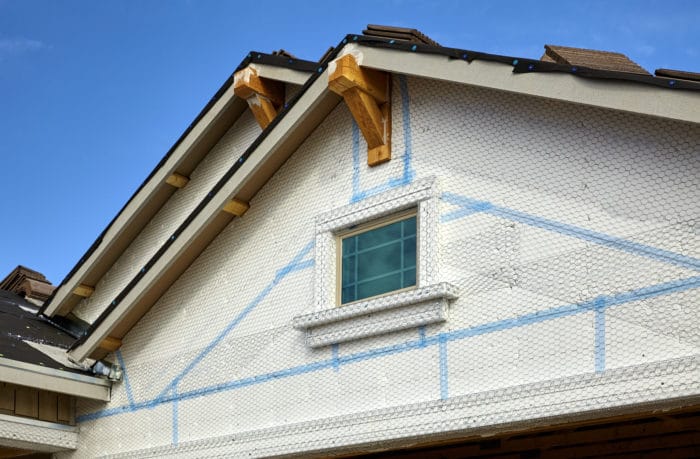
A “One Coat” Stucco system is basically:
- A moisture barrier
- Insulation board or panel, similarities to Styrofoam
- Lath
- Brown coat
- Finish coat
Two Questions To Ask If You Have Stucco Cracks

The first two questions that a homeowner, engineer or buyer should ask themselves when looking at stucco cracks, are:
#1
Are the cracks causing damage to the house i.e. moisture intrusion through the cracks causing mold, dry rot or allowing ants and other pest to enter into the wall?
#2
Are the cracks a “Red or Yellow Flag” that one or more structural issues are causing the stucco to crack?
If structural issues are the cause of the stucco cracking, but you just patch the crack(s) more than likely they will appear again because you have not repaired the root cause of the crack. Thus, you may be wise to correct the problem that caused the crack first, before you start repairing the cracks.
Think of a stucco wall as a compilation of layers, sometimes called a system (or a cladding system composed of layers) or an assembly composed of different layers. Each of the layers serve one or more specific purposes. Cracks could affect one or all of these layers, sections or components.
Types of Cracks
There are various types of cracks that may appear in stucco; below are some of the most common ones. The most common of all cracks are shrinkage cracks, for when stucco at first hardens and gains strength, it shrinks.
- Web or spider looking cracks
- Hairline cracks
- Door or window corner stress cracks
- Shrinkage cracks from curing and mix design
- Structural cracks
- Pattern cracking
- Horizontal, diagonal or vertical cracks
- Cracks near transition of materials
- Cracks at foam trim and moulding add on’s
Causes of stucco cracks
Knowing the cause of a crack helps guide a homeowner or contractor on what should be done. It is wise to remember there may be more than one cause for a crack to occur and that the cause may be internal issues in the stucco itself and other cracks may be from external causes.
Additionally, knowing if a crack is static (dormant) or active (dynamic) helps in determining what to do about the crack.
#1 Poor workmanship
Substrate installed improperly
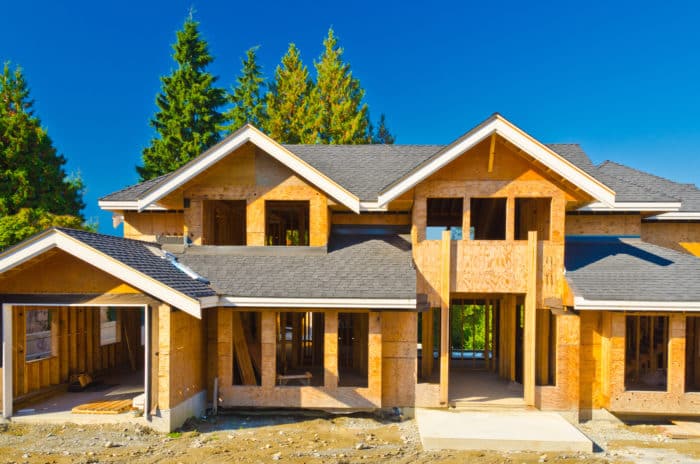
In many homes built today there will be plywood or OSB sheathing over a 2 x 6 wood stud wall creating a substrate for the stucco to be installed over. Proper installation usually calls for a 1/8 inch gap between the sheets of plywood or OSB, however, in the rapid pace of construction, framers often fail to get the proper spacing between sheets as recommended.
Months or years later after the home is built, there is a fair chance that water may penetrate the wall and occasionally expose this sheathing to moisture, and when this happens the wood will swell up and cause the edges of the sheeting to push outwardly, this causes pressure on the stucco that results in stucco cracks.
Improper ratio of materials mix to make stucco
The basic materials that are used to make stucco are sand, water, lime or Portland cement. It is not uncommon for other additives to be mixed in to improve strength, workability or to increase the stuccos’ ability to resist cracks or moisture penetration, as well as a host of other reasons. If the correct proportions are not used or inferior products, the stucco may crack easier or fail. As hard as it is to believe, this happens more than one would think.
Insufficient curing time and failure to adjust for temperature in the application process.
If insufficient time is allowed for proper curing or if work is not done within the temperature ranges for mixing, application and curing, the stucco may be weaker or fail.
Stucco may be applied too thin or thick – watch for pattern cracking
If the stucco is too thin or thick, then it may crack. It is important that the stucco workmen apply the stucco to the proper thickness, which is determine by the type of stucco being applied and the material or assembly that it is covering. One sign that the stucco may be too thin is that you will notice a pattern like cracking, because the stucco was not applied thick enough to prevent cracking over the lathing behind it. Occasionally, there may be a pattern of cracking that relates to improperly installed substrate, such as plywood or OSB board sheathing.
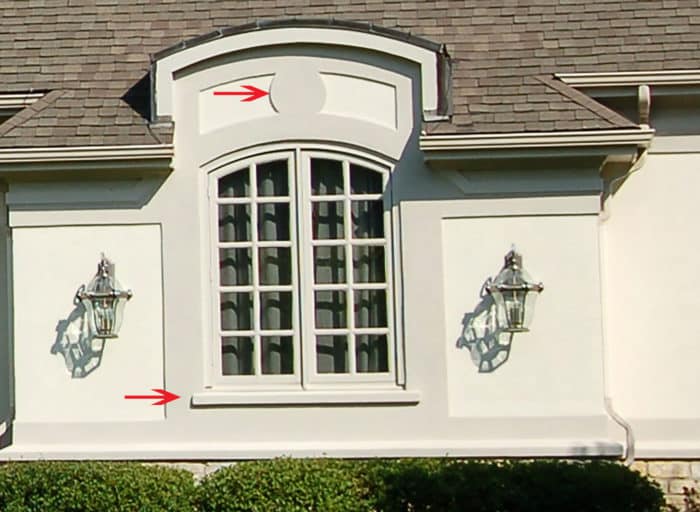
Foam trim and mouldings not installed properly
Often manufactured foam trim and mouldings are added onto stucco walls for architectural purposes. Normally the are attached to the walls with construction types of glues and adhesives. However, the workmanship at times may not be professional or per manufactures recommendations. This then may result in small hairline cracks where they are secured to the wall and occasionally moisture intrusion occurs.
Improper wire or metal mesh lath installation
Lath is one of the materials or components that stucco is applied over. It is what the stucco bonds to or holds the stucco in place. Fifty or sixty years ago, it was often thin wood slats, now it may be metal wire or metal mesh, gypsum, insulated board or fiberglass mesh. Most houses today have metal wire or metal mesh lathing.
Should the lathing not be secured properly and/or not per manufactures recommendations, then cracking is not unusual and in severe cases the stucco may sag, have a slight pillow like appearance and in a few instances, entire sections of the stucco may fall off, due to its heavy weight and lack of well secured or fastened mesh. Cracking at outside corners may be due to improper corner bead installation or structure movement. On the inside corners, some workmen, may bend the metal mesh using a hatchet like tool, which actually damages the mesh and will cause cracking at times because of this practice.
Cracking at outside corners may be due to improper corner bead installation or structure movement. On the inside corners, some workmen, may bend the metal mesh using a hatchet like tool, which actually damages the mesh and will cause cracking at times because of this practice.
#2 Shrinkage is the most common cause of stucco cracks
When there is excessive or rapid evaporation of water from the stucco in the first few days after it is applied, shrinkage cracks will occur. Additionally, it will also deprive the cement in the stucco of adequate hydration water, which then results in weaker stucco and less hardness.
Stucco shrinks as it hardens and gains strength. This shrinkage, results in micro cracking and hairline cracks. These cracks are usually less than 1/16 of an inch wide, with many being so thin that the naked eye may not be able to see them. They often just appear as random cracks or may have a spider web look.
Factors impacting shrinkage cracks
Temperature. If the temperature is to cold when mixing and applying the stucco it is detrimental for the stucco. Generally, when temperatures are 40 degrees Fahrenheit or lower, stucco should not be applied. Should a cold spell and freezing temperatures occur within 12 to 36 hours of applying the stucco, especially if it lasts several days, the stucco may lose much of its strength and in a few circumstances may have to be removed and done over again.
Hot weather. In hot temperatures 90 to 95 degrees or higher, contractors are cautious about not having the stucco set too quickly and usually try to keep it moist. Otherwise, it will dry out very rapidly and more cracking will occur.
Wind. On windy hot days there is a higher chance that stucco will dry out or have insufficient curing time to gain its full strength.
Humidity. Low humidity can contribute to curing problems. The lower the humidity and the higher the temperature and wind, the less favorable it is for applying stucco.
If the temperature and wind are reasonable, and the humidity is over 70% or there is a heavy fog, then some contractors do not feel the need to mist or sprinkler the stucco down in the application and curing process.
Proper moistness. Failure to keep the stucco lightly moist or slightly damp often contributes to more stress cracking. Keeping the stucco properly moist helps with the curing process and usually results in stronger and harder stucco.
Mix ratio of the sand, water, and Portland cement. Adding too much water in the mixing process is one of the largest reasons for shrinkage cracks. When there is an over abundance of water in a stucco mix, it will reduce the bond between the cement paste and the sand. This results in a weaker stucco mix and more shrinkage cracks. Additionally, if the stucco mix has sand with excessive fine materials, clay or too much dirt, then there will be a volume loss in the material when curing and shrinkage cracking will likely occur.
#3 No Control joints or improperly installed control joints
Building codes generally require control joints to be installed when stucco is applied over lath. The purpose of having the control joints is to help relieve stress caused by shrinkage that occurs when curing or stress caused by expansion and contraction of the stucco; thus, they prevent or reduce stucco cracks over large areas.
Generally, an area that is over 144 square feet on vertical surfaces and 100 square feet on horizontal surfaces, will require control joints. The maximum distance between joints should not exceed 18 feet in any direction and should not exceed a length to width ratio of 2 ½ to 1. There are several exceptions regarding the need for control joints, including, if the stucco is directly applied over CMU (Concrete masonry units) commonly called concrete blocks, or over poured in place concrete, then the code may not apply. It is not uncommon for control joints to be installed improperly or not to engineering specifications. A second problem with the installation, is that joints are not installed in the right locations, and when this happens, cracking will often occur, even though there are control joints
#4 Soil movement
If the soil under a foundation moves, then the foundation and everything on top of it moves and that includes the wall which the stucco is attached to. The stress generated from this movement often causes stucco damage and cracking, depending on the amount of movement and stress.
Some of the main reasons for foundation movement are:
Settlement
Nearly all homes will settle. It is not uncommon for new homes to settle a 1/4 to 3/4 inch in the first year and over time the majority of all homes will have some amount of settling. Usually, we don’t even realize it.
Expansive soils – Soils containing clay
Usually, clayey soils swell up or expand when they get wet. This swelling action can cause foundations to crack, as well as stucco cracking. Engineers usually refer to these types of soils as being expansive soils.
Soils that are experiencing “Slope Creep”
Homes that are built on hillsides or even lots that slope gently may be subject to soils that very slowly move downward, causing foundation movement. Most homes are not built in areas with “Slope Creep,” but if they are, serious damage to a home may slowly occur over time. Should a home move 1/8 inch per year, in ten years, this amounts to 2 1/2 inches. This can crack underground sewer and water pipes, as well as concrete foundations and slabs. It’s very powerful.
Areas subject to landslides and soil movement
Stucco cracks and other forms of damage occurs to homes that experience landslide activity. It is worth noting not all landslides are as big as we see on the news, however if your home is in or near an area that has had a land slide, you should check your stucco for damage or cracks.
Earthquakes
Depending on the strength of an earthquake, cracking and other damage may occur to stucco walls. Cracks caused from an earthquake may have sharper and crisper looking edges then cracks from other causes.
#5 Stress at door and window corners
One of the most common locations that homeowners see cracks are at the corners of doors and windows. They will often run vertically, horizontally or at an angle. The basic cause of most of these cracks is stress, stress that builds-up at corner areas.
Small cracks are usually a maintenance concern, however, larger cracks (1/8 of an inch or larger) or cracks that extend out from the window or door 3 to 10 feet are more of a concern. The two questions to consider are:
Is water penetrating through the crack. This would be a moisture intrusion issue and repairing and sealing the crack is usually sufficient.
Is it a possible warning sign of a structural issue? If so, then checking the home for other signs of a structural issue is wise. This would include checking for drywall cracks, sloping or wavy floors, doors or windows that are sticking and cracks in the foundation.
#6 Weather, Seasons & Climate
Stucco cracking is affected by weather, seasons and the climate. The building codes take this into consideration in determining what they will require in a specific area. Parts of the building code is even broken down into what climate zone a county is in; thus, a neighboring county may have certain requirements that are not required by your county.
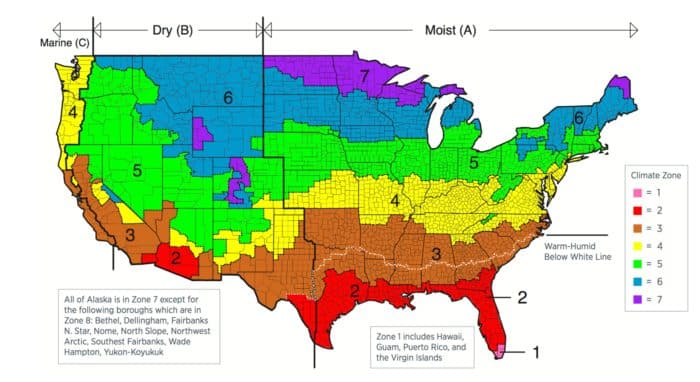
Stucco performs well in most climates
Stucco is used countrywide and in the Southwest area, 45 to 60% of the homes have stucco cladding and in states like Texas and Florida it is also very common.
Cracking due to weather and climate issues
Rainy Areas
In areas that have lots of rain there are several concerns.
Rain seeping through crack and causing wood rot and mold
If moisture gets inside a crack and freezes, it may cause the crack to become larger, allowing more moisture to enter the wall in the next rain. Also, the freezing of water that has soaked into the porous stucco will weaken or cause the stucco to deteriorate over time with the seasonal freeze / thaw cycles. Keeping cracks properly sealed is especially critical in areas with rain and freeze / thaw cycles.
Weight of snow loads
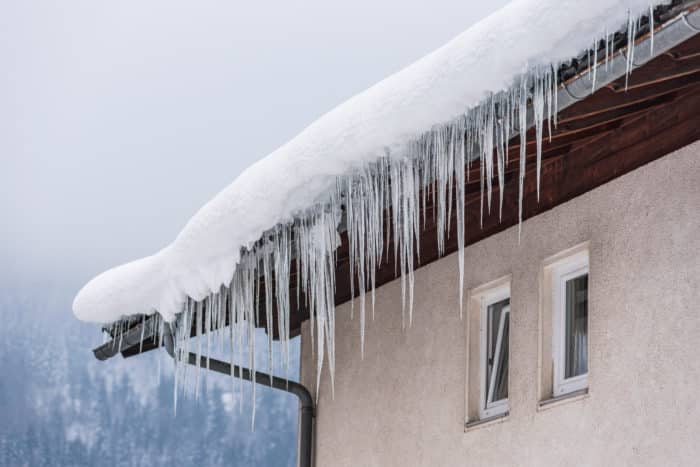
The weight of large snow loads will cause downward pressure on the framing of the structure. When this occurs, these load stresses will cause the framing to shift or move. As this movement takes place, it will cause cracks in the stucco; for stucco is brittle and does not flex.
Wind storms, hurricanes and tornadoes
Strong winds place tremendous pressure and stress on a home. At times so much so that the structure collapses or suffers considerable structural damage. In general, the more stress placed on a structure, the more movement there is. When a wood framed wall is exposed to these forces, it will generally shift or have some form of movement. This then results in stucco cracking or damage.
Another issue is when there is rain and strong winds, moisture will seep into a home’s wall through any gaps around windows, doors, or pipes penetrating through the stucco. When this happens, the moisture then may cause damage to the stucco, the framing and other components of the homes wall, i.e. insulation.
Expansion and contraction
Stucco, like many products, expands when it gets hot, and shrinks when it gets cold. This expansion and contraction can cause cracks, especially if there are not properly installed control joints.
Climate change concerns H2
As the frequency and severity of climate events increase, homeowners may be faced with more issues involving their homes cladding; whether it’s stucco, vinyl, wood, brick, or fiber cement cladding like Hardiplank or Hardiboard. Therefore, proper maintenance and care is critical.
Moisture in the wall cavity
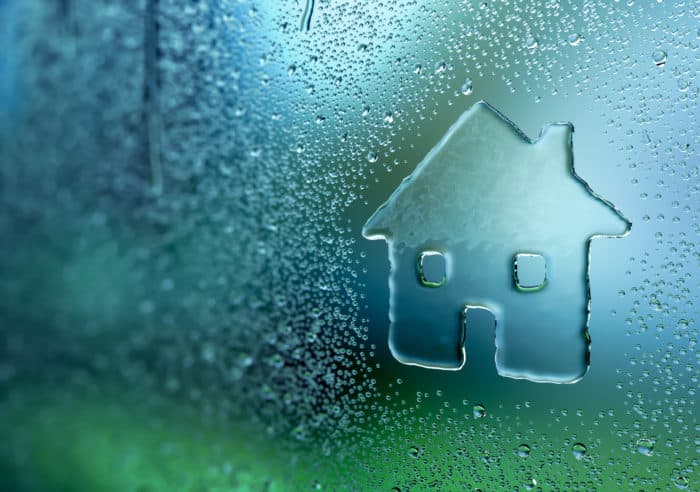
Moisture that penetrates a stucco wall is a significant problem because it can cause a lot of damage. Cracks is one of the main ways that moisture penetrates a wall, however, there are a number of other ways that moisture enters a wall. They include gaps around penetrations, capillary action, flashing missing or installed improperly, and improper workmanship.
Another set of causes have developed due to Building Code changes, lack of proper drainage planes, faulty building wraps or installation, as well as water vapor issues.
Water gets into a wall cavity from:
Liquid – Water my enter a wall cavity from the forces of rain, gravity or wind.
Vapor – Water in a gaseous form may enter a wall cavity through differential vapor pressure between the inside and outside of a building. Once vapor is in a wall cavity it may turn into condensation due to temperature changes.
Solid – When moisture condenses and freezes repeatedly in a wall cavity, contraction and expansion will occur; causing damage.
Note. It always best to prevent water from getting into a wall cavity, but if does get into wall cavity, providing a way for it to drain, escape or dry out is then the next best option. Thus, do not block the stuccos weep screed with soil or concrete.
All house claddings, whether traditional stucco, EFIS synthetic stucco, One coat stucco or other non-stucco claddings such as wood, brick, vinyl etc. have moisture intrusion issues.
Structural Cracks
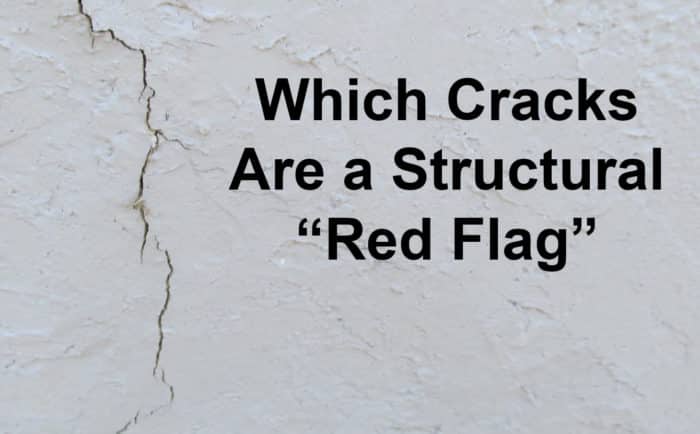
Cracks that are related to structural issues have a number of things in common:
- They are usually caused or related to some form of stress or movement of the structure:
- Movement of the soil and foundation
- Movement related to the framing of the house
- Moisture issues that damaged the structural framing or sheeting
- They are generally 1/8 inch or more wide. Hairline cracks would usually be less of a concern, unless they are an early sign of a problem and/or will get larger over time.
There are frequently a number of warning signs in homes with structural issue and stucco cracks is just one of those warning signs.
Warning signs of homes with structural issues include:
- “V” shaped stucco cracks
- Cracks that are diagonal in nature
- Offset stucco cracks
- Cracks 1/8 inch or wider
- Sloping floors
- Sagging roofs
- Cracks in the garage floor or house slab
- Foundation cracks
- Bowing or bulging stucco walls
Read more on identifying and evaluating structural cracks
Tip. Remember that if the cracks are a result of structural issues and you do not address the structural issue first, the cracks that you repair, will most likely keep coming back.
Repair and Maintenance
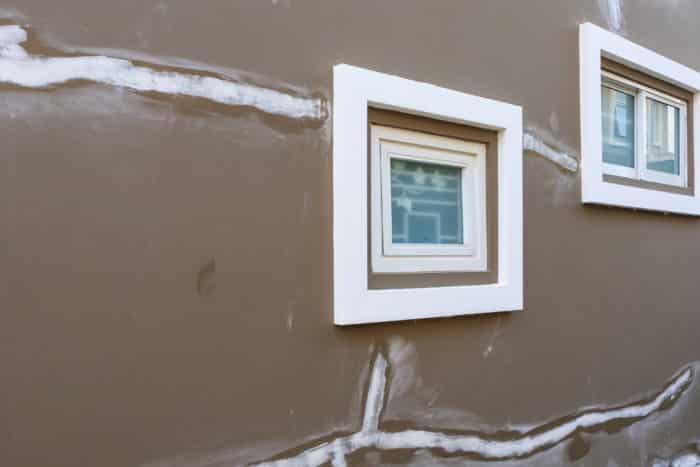
Many issues and cracks can be handled by a homeowner. There are number of stucco patching products, as well as crack caulking and sealing products available to homeowners. Nearly all hardware stores and the big box building supply stores, including some of the large retail chains carry these products.
Caulking of cracks and gaps is usually part of maintaining a home’s stucco. Some caulking’s are elastic in nature and will work well for cracks and gaps, even if they move a little, and there are caulking’s that have a sandy texture that will match some stucco finishes. Note that when doing repairs or caulking, they may stand out to some extent when you step back and look at the work.
There are professional plasters that do a lot of stucco repairs who can do stucco repairs, should you desire not to. For major repairs or repair work on EFIS systems, it is usually wise to hire a professional contractor, one familiar with EFIS systems, to do the work and in circumstance where the problems are major, a qualified engineer should be consulted.

A short list of things a homeowner should do to protect and care for their stucco walls
Stucco cladding on a home is one of the most popular choices by home buyers, architects, and builders. It can be used to achieve many architectural looks, it’s economical, can be repaired easily, easy to maintain, has a long life and provides great fire protection.
- Adjust any yard or planter sprinklers that are hitting your stucco wall.
- Caulk or seal around any pipe or wall penetrations that have gaps or areas that could allows moisture to enter the wall.
- Repair and seal any cracks or damaged areas.
- If there is weep screed, check that it is not covered or blocked.
- Remove any clinging vines or ivy from the wall. Helps prevent damage to the stucco.
- If stains or efflorescence, check for moisture issues and mold.
- Review any flashing at deck, balcony, window and door areas.
- Remove items on the wall that may cause damage to stucco (i.e. basketball hoops, tree branches hitting or rubbing the wall, etc.)
- Examine areas where the stucco siding (cladding) meets other types of siding, i.e. brick, stone or wood; areas where water may seep through.
- Clean and repair gutters.
- Check to see that water drains away from the house’s foundation. No puddling or standing water.

Like all claddings it has pro’s and con’s. Homeowners should know what type of stucco cladding they have; is it, Traditional hard coat stucco, an EFIS synthetic stucco system or a One coat stucco system. Knowing the type of stucco you have helps guide you in what problems to watch for, and how to correct or repair the problems.
Cracking is one issue that stucco has and may allow moisture intrusion into a wall if not maintained. This moisture may cause wood rot, mold and possibly structural problems. Therefore, knowing what to look for, the causes, and correcting any problems early on will help prevent costly repairs and larger problems, months, or years down the road.
